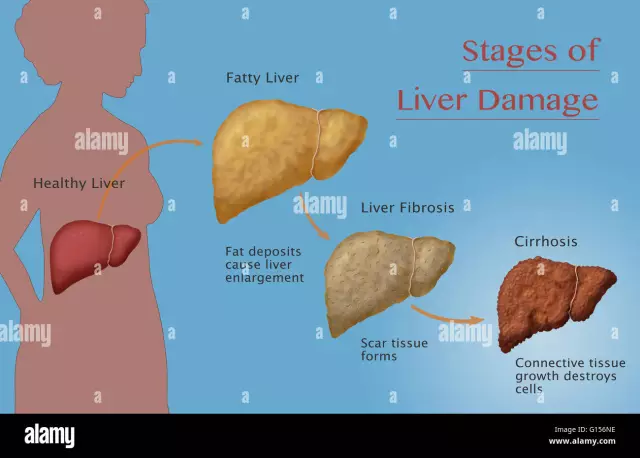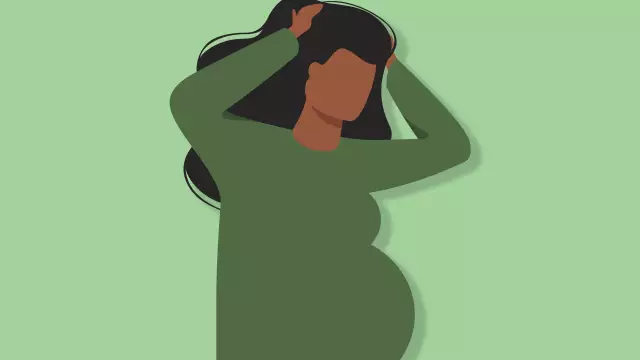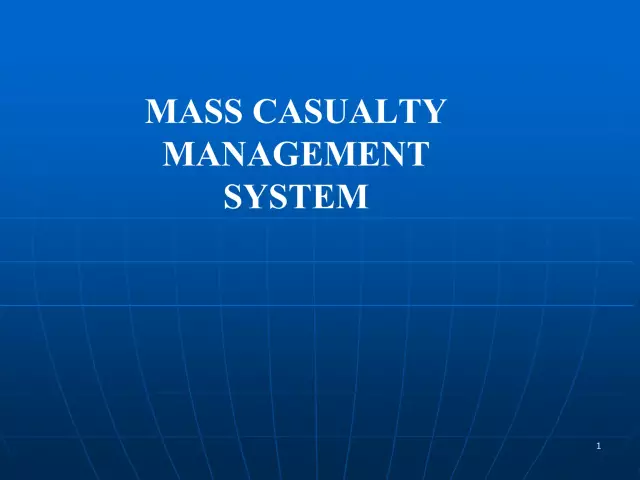- Author Rachel Wainwright [email protected].
- Public 2023-12-15 07:39.
- Last modified 2025-11-02 20:14.
Migraine

Migraine is not a fatal, but a serious neurological disease that occurs mainly in young and mature age.
Migraine is characterized by severe paroxysmal headaches, more often than one half of the head, focused in the frontotemporal-orbital region.
Migraine is one of the most ancient known diseases, described already in the Sumerian and ancient Egyptian manuscripts, but still much of it remains unknown.
Migraine causes
One of the mysteries is the causes of migraines. Based on long-term observations, it was possible to establish some patterns of migraine occurrence.
Both men and women suffer from migraine, but it is twice as common in women as in men. There is a dependence of the incidence of the disease on the lifestyle, so it has been established that people who are socially active and ambitious, professions that require high mental activity, and housewives are most susceptible to migraines. Cases of migraine are extremely rare among people of working professions, whose activities are associated with constant physical activity.
People suffering from it attribute many factors to the causes of migraine, but in fact, it was not possible to establish their direct influence on the development of an attack, therefore, such factors can only be considered predisposing, or "triggering moment" that is triggered when the true cause of the disease appears. Causes of migraines include:
- Some types of products: hard aged cheeses, red wine, chocolate, fish of the mackerel family, smoked meats, coffee;
- Stress or experienced psycho-emotional excitement.;
- Certain types of medications, such as oral contraceptives
- A sharp change in weather (meteorological form of migraine);
- Strong physical activity;
- Premenstrual syndrome.
Usually, experienced patients know what exactly triggers a migraine attack, and try to eliminate the influence of this factor, thus, they manage to reduce the frequency of attacks, but not get rid of them completely.
Migraine symptoms
In some forms of migraine, the attack begins with the appearance of characteristic special precursors, the so-called aura. As precursors, different people have different sensations: visual (flies in front of the eyes, fog, the appearance of bright flashes on the periphery of vision, etc.), tactile (tingling sensation in various parts of the body, numbness of the limbs, "goosebumps"), auditory (noise, ringing in the ears). The aura does not always occur, but only in 20% of patients, and is one of the diagnostic signs of the disease.
A characteristic symptom of migraine is severe, throbbing pain in one side of the head. In ancient times, on this basis, migraine was called hemicrania - "half-cranial". Remember Bulgakov's Pontius Pilate from The Master and Margarita? Bulgakov was a doctor by training, and very accurately described the feelings of a person experiencing a migraine attack. Sometimes seizures can occur all over the top of the head, but this is the exception rather than the rule. Migraine attacks are rarely always only in one half of the head, usually from attack to attack the right and left parts alternate, although there may be "favorite" sides.
Another symptom characteristic of migraine is increased pain from bright light, strong noise, physical and mental activity. The impact of noise and light stimuli is so great that sound and photophobia can develop. During an attack, patients tend to retire in a quiet, dark room and take a relaxing position, this brings them relief.
A throbbing migraine headache is often accompanied by nausea and even vomiting. In the stage of an attack that has developed, a weakening of intestinal motility and stomach stasis may occur, when the contents are retained in the stomach, without moving further. This is one of the reasons that medications may not be effective - they simply do not go to the small intestine, where absorption usually occurs.
The duration of migraine attacks, and the attack can last from three hours to three days.
Especially if they are often repeated, it is the main problem of migraine, since at this time a person loses his ability to work and completely drops out of his usual life.
Diagnosis of migraine
The diagnosis of migraine is made on the basis of a characteristic clinical picture, after undergoing a thorough neurological examination. Examination by a neurologist is also necessary in order to exclude other diseases, which are characterized by attacks of severe headache.
Migraine treatment

Treatment of migraine is mainly symptomatic, that is, aimed either at stopping the attack at the very beginning, or at interrupting it when the attack has already developed. At the beginning of an attack, paracetamol or aspirin can help, as well as other medications, selected by the doctor individually. In some cases, homeopathic medicines are successfully used to treat migraines, as well as non-pharmacological agents, for example, acupuncture (acupuncture) gives excellent results.
It can be very difficult to help the patient in the stage of the developed attack. Many patients resort to traditional migraine treatment. Various methods are used to interrupt an attack: pouring hot or cold water on the head, a mustard plaster on the collar zone, a warm bath. While these traditional migraine treatments are simple, some can be very effective, and experienced patients tend to find what works by trial and error. Alternative treatment for migraine also involves the use of various herbal teas, for example, from meadow clover, lemon balm, St. John's wort, oregano and other herbs. Sometimes a simple cup of coffee or tea helps, caffeine generally refers to anti-migraine drugs, but at the same time, in other patients, it is coffee that can provoke an attack. Generally,alternative migraine treatment is aimed at alleviating the patient's condition.
The problem of migraine treatment is that in each case there is an individual sensitivity to certain drugs, and what works well for one patient may not affect the other at all, moreover, it may serve to increase the headache.
In severe cases, a migraine attack can turn into a migraine status, when the attacks follow one after the other almost continuously, and even into a migraine stroke, therefore, traditional migraine treatment alone is not enough, compulsory medical supervision is required.
It must also be said that the treatment of migraine is ineffective if you do not streamline the lifestyle that led to the disease. It is imperative to have proper, regular nutrition with the exception of heavy food, adherence to the daily routine and work, good sleep and frequent exposure to fresh air. As a rule, a change in lifestyle in this direction in combination with individually selected drug therapy can save a person from painful migraine attacks.
YouTube video related to the article:
The information is generalized and provided for informational purposes only. At the first sign of illness, see your doctor. Self-medication is hazardous to health!






